Faculty
Patric Jensfelt - Head of Division
KTH profile page for Patric Jensfelt
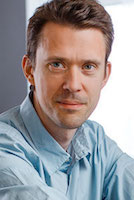
Patric Jensfelt is a Professor of Computer Science specialised in Robotics at RPL. His research group focuses mainly on methods to support autonomy of robots. In particular, this means i) modelling space and the objects therein from sensor data, exploiting priors when suitable and possible, ii) methods for autonomous exploration of space to connect modelling and control in an active SLAM system and iii) systems integration. The two main applications are currently autonomous driving and drones.
Christian Smith - Deputy head of division
KTH profile page for Christian Smith
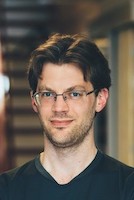
Christian Smith is an associate professor in Computer Science, specialized in robotics and autonomous systems, and the deputy head of RPL. His current research explores human-robot interaction and how to combine supervised and unsupervised learning for mobile manipulation and assembly. The goal is to find methods that enable fast and flexible set up for automation for small batch sizes. He teaches both introductory programming and second cycle robotics courses, with the goal to give students a chance to work with the broad multidisciplinary field of robotics as a whole.
Hedvig Kjellström
KTH profile page for Hedvig Kjellström
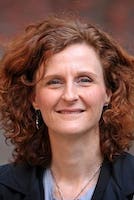
Hedvig Kjellström is a Professor at RPL, and also a Principal AI Scientist at Silo AI, Sweden and an affiliated researcher in the Max Planck Institute for Intelligent Systems, Germany. Her present research focuses on methods for enabling artificial agents to interpret the behavior of humans and other animals, and also to behave in ways interpretable to humans. The research has a strong multi-disciplinary focus and these ideas are applied in performing arts, healthcare, veterinary science, and smart society.
Florian Pokorny
KTH profile page for Florian Pokorny

Florian Pokorny is an Associate Professor of Machine Learning at RPL. His group currently focuses on two main research directions: 1) machine learning algorithms with a geometric or topological flavor or which utilize insights about geometry in the context of other methods such as deep learning and 2) machine learning methods that are tailored for robotic manipulation or motion planning and which incorporate available domain knowledge and information about physics and configuration space geometry in order to be data efficient.
Danica Kragic Jensfelt
KTH profile page for Danica Kragic Jensfelt
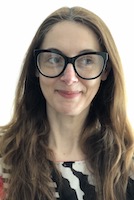
Danica Kragic received MSc in Mechanical Engineering from the Technical University of Rijeka in 1995 and PhD in Computer Science from KTH in 2001. She was a visiting researcher at Columbia University, Johns Hopkins University and INRIA Rennes. She received the 2007 IEEE Robotics and Automation Society Early Academic Career Award. She is a member of the Royal Swedish Academy of Sciences, Royal Swedish Academy of Engineering Sciences and Founding member of Young Academy of Sweden. She holds a Honorary Doctorate from the Lappeenranta University of Technology. Her research is in the area of robotics, computer vision and machine learning. She received ERC Starting and Advanced Grants and Distinguished Professor Grant from the Swedish Research Council. Her research is also supported by the Knut and Alice Wallenberg Foundation and Swedish Foundation for Strategic Research.
John Folkesson
KTH profile page for John Folkesson
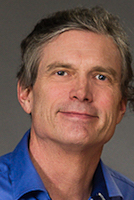
John Folkesson's research group focuses on mobile robot perception and navigation. Building geometrically correct world models as a robot moves about is one of the fundamental capabilities of any mobile robot. Without that, true autonomy can not be achieved. This is usually referred to as Simultaneous Localization and mapping, SLAM. It requires using sensors such as cameras, lidar, or sonar. The environment contains three types of mapped items, fixed landmarks that can aid in navigation, movable objects that can be important to understand in the context of the task, and moving agents that need to be tracked, predicted and interacted with. All those have been studied by the group. Current research has focused more on extracting meaningful features from sensors and matching them to earlier measured features. This has evolved to rely more and more on machine learning and neural nets in particular. One of the main applications is underwater robotics in the Swedish Marine Robotics Centre, SMaRC , that runs until 2024.
Iolanda Dos Santos Carvalho Leite
KTH profile page for Iolanda Dos Santos Carvalho Leite
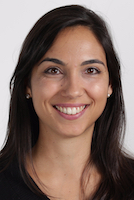
Iolanda Leite is an Associate Professor at RPL. She holds a PhD in Information Systems and Computer Engineering from IST, University of Lisbon. Prior to joining KTH, she had postdoctoral appointments at Yale University and at Disney Research. Her research goal is to develop social robots that can perceive, learn from and respond appropriately to people in real-world situations, allowing for truly efficient and engaging long-term interactions with people. She received a Starting Grant from the Swedish Research Council, a globally competitive Early Career Fellowship awarded by the Jacobs Foundation, and was recently awarded one of the individual grants by the Swedish Foundation for Strategic Research's Future Research Leaders program. She is a member of the HRI Steering Committee and the Co-editor in Chief of AI Matters, the newsletter of the ACM Special Interest Group in Artificial Intelligence (SIGAI).
Jana Tumova
KTH profile page for Jana Tumova
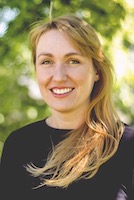
Jana Tumova is an associate professor at RPL. Her research group focuses on designing planning, decision making, and control algorithms to enable safe, purposeful and trustworthy autonomous behavior. The core of her approach is the use of formal methods-inspired techniques that allow for rigorous specification of a rich set of goals, constraints, and preferences, and automated synthesis of plans, policies, and controllers with performance guarantees. Her group utilizes them in applications ranging from autonomous driving, exploration with UAVs or navigation around people, to network control. Jana received PhD in computer science from Masaryk University and was awarded ACCESS postdoctoral fellowship at KTH in 2013. She was also a visiting researcher at MIT, Boston University, and Singapore-MIT Alliance for Research and Technology. She is a recipient of a Swedish Research Council Starting Grant and an Early Career Spotlight Award from Robotics: Science and Systems Foundation.
Petter Ögren
KTH profile page for Petter Ögren
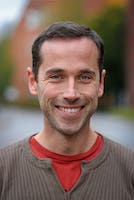
Petter Ögren was born in Stockholm, Sweden, in 1974. He received the M.S. degree in engineering physics and the Ph.D. degree in applied mathematics from the Royal Institute of Technology (KTH), Stockholm, Sweden, in 1998 and 2003, respectively. In the fall of 2001, he visited the Mechanical Engineering Department, Princeton University, Princeton, NJ. From 2003 to 2012 he worked as a senior scientist and deputy research director in Autonomous Systems at the Swedish Defence Research Agency (FOI). In 2013 he started as an Associate Professor at KTH, and since 2018, he is a Professor at the division of Robotics, Perception and Learning (RPL) at KTH.
Atsuto Maki
KTH profile page for Atsuto Maki
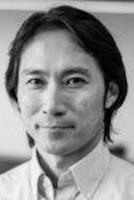
Atsuto Maki is a Professor of Computer Science with specialisation in Machine Learning. His research group primarily works on model learning for computer vision; they are designing algorithms for making efficient models and for achieving high accuracy given few training data while covering versatile application domains with industrial partners. He received BEng from Kyoto U, MEng from U Tokyo, and PhD from KTH. He also spent 10+ years in industry and holds 30+ patents in the area of image analysis.
Hossein Azizpour
KTH profile page for Hossein Azizpour
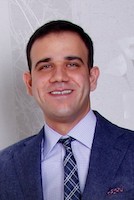
Hossein Azizpour is an Associate Professor of Machine Learning. His group does research on deep learning; both fundamental and applied which feed into each other. The fundamental research seeks to answer the question of how to go beyond standard deep learning and closer to a system-2 reasoning. The current fundamental themes include learning to reason about uncertainty and explanations of predictions as well as understanding the innerworkings of deep networks. The real-world applications include biology, fluid flow simulations, and earth observation.
Josephine Sullivan
KTH profile page for Josephine Sullivan
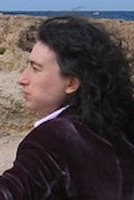
Josephine Sullivan is an Associate Professor of Computer Science with a specialization in Computer Vision. She has worked for several decades within the field of computer vision and seen the field transformed by deep learning. Her initial research focus was on object and multi-target tracking in visual data and 3D human pose estimation. Work completed with her PhD student Vahid Kazemi on face alignment was used at one stage to drive Snapchat’s facial graphics. More recently she has performed research on representation and transfer learning and multi-modal learning between vision and text. She also has on-going research on satellite image analysis for detecting wildfires. She received her PhD from Oxford University (eons ago) and before that a BA in Mathematics from Trinity College Dublin (even more eons ago).
Mårten Björkman
KTH profile page for Mårten Björkman

Mårten Björkman is an associate professor in computer science with perception and learning as primary research areas. His work has often involved real-world robotic systems with a focus on 3D perception and control, exploiting perceptual modalities such as stereo vision and force-torque sensing. Usually, the robotic system has been seen as part of a larger environment that also includes human co-workers, where the goal has been to make human-robot interaction work as seamlessly as possible by interpreting the intentions of others and adapting accordingly. In recent years, his focus has been more on modelling sequential data in general. These studies have involved not just reinforcement-based control of robotic systems, but also prediction and generation of human movement, modelling and control of power systems, and online learning of dynamical systems for vehicle control. He is also interested in understanding factors of implicit regularization of neural networks and how these affect the networks' ability to generalize.
Noémie Jaquier
KTH profile for Noémie Jaquier

Noémie Jaquier is an assistant professor in robot learning and control at RPL. She received her PhD degree from the Ecole Polytechnique Fédérale de Lausanne (EPFL), Switzerland in 2020. Prior to joining KTH, she was a postdoctoral researcher in the High Performance Humanoid Technologies Lab (H²T) at the Karlsruhe Institute of Technology and a visiting postdoctoral scholar at the Stanford Robotics Lab. Her research investigates data-efficient and theoretically-sound learning algorithms that leverage differential geometry- and physics-based inductive bias to endow robots with close-to-human learning and adaptation capabilities.
Olov Andersson
KTH profile for Olov Andersson

Olov Andersson is an Assistant Professor in AI for Autonomous Systems. His group explores how to embody recent advances in AI (VLMs,LLM,...) to enable real-world autonomous systems such as mobile robots and vehicles to understand, navigate and interact with the world. Before joining KTH he was a senior researcher in the Autonomous Systems Lab at ETH Zurich, where he co-led a part of the winning team in the DARPA SubT Challenge ("The Pentagon's $82M Superbowl or Robots" - Washington Post). Olov is a WASP Fellow, recipient of a WASP Alumni of the Year Award as well as a postdoctoral scholarship funded by the Wallenberg foundations.
